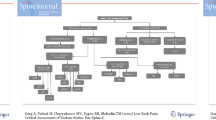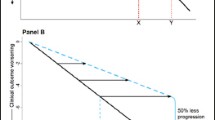Abstract
Background: Relapses are a common feature of relapsing-remitting multiple sclerosis (RRMS) and increasing severity has been shown to be associated with higher healthcare costs, and to result in transient increases in disability. Increasing disability likely impacts work and leisure productivity, and lowers quality of life.
Objective: The objective of this study was to characterize from the patient’s perspective the impact of a multiple sclerosis (MS) relapse in terms of the economic cost, work and leisure productivity, functional ability, and health-related quality of life (HR-QOL), for a sample of patients with RRMS in the US treated with immunomodulatory agents.
Methods: A cross-sectional, web-based, self-report survey was conducted among members of MSWatch.com, a patient support website now known as Copaxone.com. Qualified respondents in the US had been diagnosed with RRMS and were using an immunomodulatory agent. The survey captured costs of RRMS with questions about healthcare resource utilization, use of community services, and purchased alterations and assistive items related to MS. The Work and Leisure Impairment instrument and the EQ-5D were used to measure productivity losses and HR-QOL (health utility), respectively. The Goodin MS neurological impairment questionnaire was used to measure functional disability; questions were added about relapses in the past year.
Results: Of 711 qualified respondents, 67% reported having at least one relapse during the last year, with a mean of 2.2 ± 2.3 relapses/year. Respondents who experienced at least one relapse had significantly higher mean annual direct and indirect costs compared with those who did not experience a relapse ($US38 458 vs $US28 669; p = 0.0004) [year 2009 values]. Direct health-related costs accounted for the majority of the increased cost ($US5201; 53%) and were mainly due to increases in hospitalizations, medications, and ambulatory care. Indirect costs, including informal care and productivity loss, accounted for the additional 47% of increased cost ($US4588). Accounting for the mean number of relapses associated with these increased costs, the total economic cost of one relapse episode could be estimated at about $US4449, exclusive of intangible costs. The mean self-reported Expanded Disability Status Scale (EDSS) score, derived from the Goodin MS questionnaire, was significantly higher with relapse than with a clinically stable state (EDSS 4.3 vs 3.7; p<0.0001), while the mean health utility score was significantly lower with relapse compared with a clinically stable state (0.66 vs 0.75; p = 0.0001). The value of these intangible costs of relapse can be estimated at $US5400. The overall burden (direct, indirect, and intangible costs) of one relapse in patients treated with immunomodulatory agents is therefore estimated conservatively at $US9849.
Conclusions: This study shows that from a patient’s perspective an MS relapse is associated with a significant increase in the economic costs as well as a decline in HR-QOL and functional ability.




Similar content being viewed by others
References
National Multiple Sclerosis Society. Epidemiology of MS [online]. Available from URL: http://www.nationalmsso ciety.org/about-multiple-sclerosis/what-we-know-about-ms/ who-gets-ms/epidemiology-of-ms/index.aspx [Accessed 2010 Aug5]
Minden SL, Frankel D, Hadden L, et al. The Sonya Slifka Longitudinal Multiple Sclerosis Study: methods and sample characteristics. Mult Scler 2006 Feb; 12(1): 24–38
Jacobs LD, Wende KE, Brownscheidle CM, et al. A profile of multiple sclerosis: the New York State Multiple Sclerosis Consortium. Mult Scler 1999 Oct; 5(5): 369–76
Ollendorf DA, Jilinskaia E, Oleen-Burkey M. Clinical and economic impact of glatiramer acetate versus beta interferon therapy among patients with multiple sclerosis in a managed care population. J Manag Care Pharm 2002 Nov–Dec; 8(6): 469–76
Prescott JD, Factor S, Pill M, et al. Descriptive analysis of the direct medical costs of multiple sclerosis in 2004 using administrative claims in a large nationwide database. J Manag Care Pharm 2007 Jan–Feb; 13(1): 44–52
Ivanova JI, Birnbaum HG, Samuels S, et al. The cost of disability and medically related absenteeism among employees with multiple sclerosis in the US. Pharmacoeconomics 2009; 27(8): 681–91
Lage MJ, Castelli-Haley J, Oleen-Burkey MA. Effect of immunomodulatory therapy and other factors on employment loss time in multiple sclerosis. Work 2006; 27(2): 143–51
Whetten-Goldstein K, Sloan FA, Goldstein LB, et al. A comprehensive assessment of the cost of multiple sclerosis in the United States. Mult Scler 1998 Oct; 4(5): 419–25
Kobelt G, Berg J, Atherly D, et al. Costs and quality of life in multiple sclerosis: a cross-sectional study in the United States. Neurology 2006 Jun 13; 66(11): 1696–702
Weinshenker BG, Bass B, Rice GP, et al. The natural history of multiple sclerosis: a geographically based study, 2: predictive value of the early clinical course. Brain 1989 Dec; 112 (Pt 6): 1419–28
Weinshenker BG, Bass B, Rice GP, et al. The natural history of multiple sclerosis: a geographically based study, 1: clinical course and disability. Brain 1989 Feb; 112 (Pt 1): 133–46
Thrower BW. Relapse management in multiple sclerosis. Neurologist 2009 Jan; 15(1): 1–5
Halper J. The psychosocial effect of multiple sclerosis: the impact of relapses. J Neurol Sci 2007 May 15; 256Suppl. 1: S34–8
Morrow TJ. The costs and consequences of multiple sclerosis relapses: a managed care perspective. J Neurol Sci 2007 May 15; 256Suppl. 1: S39–44
Weis R, Stamm K, Smith C, et al. Communities of care and caring: the case of MSWatch.com®. J Health Psychol 2003; 8: 135–48
Henriksson F, Fredrikson S, Masterman T, et al. Costs, quality of life and disease severity in multiple sclerosis: a cross-sectional study in Sweden. Eur J Neurol 2001 Jan; 8(1): 27–35
Kobelt G, Lindgren P, Parkin D, et al. Costs and quality of life of in multiple sclerosis: a cross sectional observational study in the United Kingdom. SSE/EFI working paper series in economics and finance no. 398. Stockholm: Stockholm School of Economics, 2000
Kobelt G, Lindgren P, Smala A, et al. Costs and quality of life in multiple sclerosis: a cross sectional observation study in Germany. Eur J Health Econ 2001; 2: 60–8
Reilly M, Tanner A, Meltzer E. Work, classroom and activity impairment instruments: validation studies in allergic rhinitis. Clin Drug Invest 1996; 11: 278–88
Reilly MC, Zbrozek AS, Dukes EM. The validity and reproducibility of a work productivity and activity impairment instrument. Pharmacoeconomics 1993 Nov; 4(5): 353–65
US Bureau of Labor. Occupational employment statistics, 2008 [online]. Available from URL: http://www.bls.gov/ OES [Accessed 2010 Jun 23]
Goodin DS. A questionnaire to assess neurological impairment in multiple sclerosis. Mult Scler 1998 Oct; 4(5): 444–51
Goodin DS. Survey of multiple sclerosis in northern California. Northern California MS Study Group. Mult Scler 1999 Apr; 5(2): 78–88
EuroQol: a new facility for the measurement of health-related quality of life. The EuroQol Group. Health Policy 1990 Dec; 16(3): 199–208
Rabin R, de Charro F. EQ-5D: a measure of health status from the EuroQol Group. Ann Med 2001 Jul; 33(5): 337–43
Kind P. The EuroQoL instrument: an index of health-related quality of life. In: Spilker B, editor. Quality of life and pharmacoeconomics in clinical trials. Philadelphia (PA): Lippincott-Raven Publishers, 1996: 191–201
Dolan P, Gudex C, Kind P, et al. Social tariff for the EuroQoL: results from a UK general population survey. York: Centre for Health Economics, University of York, 1995
Johannesson M. At what coronary risk level is it cost-effective to initiate cholesterol lowering drug treatment in primary prevention? Eur Heart J 2001 Jun; 22(11): 919–25
Kobelt G, Berg J, Lindgren P, et al. Costs and quality of life of patients with multiple sclerosis in Europe. J Neurol Neurosurg Psychiatry 2006 Aug; 77(8): 918–26
McCrone P, Heslin M, Knapp M, et al. Multiple sclerosis in the UK: service use, costs, quality of life and disability. Pharmacoeconomics 2008; 26(10): 847–60
Taylor B, McDonald E, Fantino B, et al. The cost of multiple sclerosis in Australia. J Clin Neurosci 2007 Jun; 14(6): 532–9
Coyle PK. Gender issues. Neurol Clin 2005 Feb; 23(1): 39–60
O’Brien JA, Ward AJ, Patrick AR, et al. Cost of managing an episode of relapse in multiple sclerosis in the United States. BMC Health Serv Res 2003 Sep 2; 3(1): 17
Grima DT, Torrance GW, Francis G, et al. Cost and health related quality of life consequences of multiple sclerosis. Mult Scler 2000 Apr; 6(2): 91–8
Rivera-Navarro J, Benito-Leon J, Oreja-Guevara C, et al. Burden and health-related quality of life of Spanish care-givers of persons with multiple sclerosis. Mult Scler 2009 Nov; 15(11): 1347–55
Rivera-Navarro J, Morales-Gonzalez JM, Benito-Leon J. Informal caregiving in multiple sclerosis patients: data from the Madrid Demyelinating Disease Group Study. Disabil Rehabil 2003 Sep 16; 25(18): 1057–64
Kobelt G, Berg J, Lindgren P, et al. Costs and quality of life of multiple sclerosis in the United Kingdom. Eur J Health Econ 2006 Sep; 7Suppl. 2: S96–104
Kalb R. The emotional and psychological impact of multiple sclerosis relapses. J Neurol Sci 2007 May 15; 256Suppl. 1: S29–33
Orme M, Kerrigan J, Tyas D, et al. The effect of disease, functional status, and relapses on the utility of people with multiple sclerosis in the UK. Value Health 2007 Jan–Feb; 10(1): 54–60
Patwardhan MB, Matchar DB, Samsa GP, et al. Cost of multiple sclerosis by level of disability: a review of literature. Mult Scler 2005 Apr; 11(2): 232–9
Lublin FD, Baier M, Cutter G. Effect of relapses on development of residual deficit in multiple sclerosis. Neurology 2003 Dec 9; 61(11): 1528–32
Hirst C, Ingram G, Pearson O, et al. Contribution of relapses to disability in multiple sclerosis. J Neurol 2008 Feb; 255(2): 280–7
Confavreux C, Vukusic S, Adeleine P. Early clinical predictors and progression of irreversible disability in multiple sclerosis: an amnesic process. Brain 2003 Apr; 126 (Pt 4): 770–82
Tremlett H, Yousefi M, Devonshire V, et al. Impact of multiple sclerosis relapses on progression diminishes with time. Neurology 2009 Nov 17; 73(20): 1616–23
O’Connor P, Filippi M, Arnason B, et al. 250 microg or 500 microg interferon beta-1b versus 20 mg glatiramer acetate in relapsing-remitting multiple sclerosis: a prospective, randomised, multicentre study. Lancet Neurol 2009 Oct; 8(10): 889–97
Mikol DD, Barkhof F, Chang P, et al. Comparison of subcutaneous interferon beta-1a with glatiramer acetate in patients with relapsing multiple sclerosis (the REbif vs Glatiramer Acetate in Relapsing MS Disease [REGARD] study): a multicentre, randomised, parallel, open-label trial. Lancet Neurol 2008 Oct; 7(10): 903–14
Johnson KP, Brooks BR, Cohen JA, et al. Copolymer 1 reduces relapse rate and improves disability in relapsing-remitting multiple sclerosis: results of a phase III multicenter, double-blind placebo-controlled trial. The Copolymer 1 Multiple Sclerosis Study Group. Neurology 1995 Jul; 45(7): 1268–76
Khan OA, Tselis AC, Kamholz JA, et al. A prospective, open-label treatment trial to compare the effect of IFNbeta-1a (Avonex), IFNbeta-1b (Betaseron), and glatiramer acetate (Copaxone) on the relapse rate in relapsing-remitting multiple sclerosis: results after 18 months of therapy. Mult Scler 2001 Dec; 7(6): 349–53
Haas J, Firzlaff M. Twenty-four-month comparison of immunomodulatory treatments-a retrospective open label study in 308 RRMS patients treated with beta interferons or glatiramer acetate (Copaxone). Eur J Neurol 2005 Jun; 12(6): 425–31
The IFNB Multiple Sclerosis Study Group. Interferon beta-1b is effective in relapsing-remitting multiple sclerosis, I: clinical results of a multicenter, randomized, double-blind, placebo-controlled trial. Neurology 1993 Apr; 43(4): 655–61
Minden S, Hoaglin D, Jureidini S, et al. Disease-modifying agents in the Sonya Slifka Longitudinal Multiple Sclerosis Study. Mult Scler 2008 Jun; 14(5): 640–55
Acknowledgments
This study was sponsored by Teva Neuroscience, the distributor of glatiramer acetate (Copaxone®). The sponsor designed and conducted the study. The data analysis was done by HealthMetrics Outcomes Research, funded by Teva Neuroscience. All of the authors participated in the interpretation and writing of the manuscript. Medical writing services were provided by Orly Aridor and were funded by Teva Neuroscience. Kenneth Johnson served as a consultant to Teva Neuroscience.
Author information
Authors and Affiliations
Additional information
Key points for decision makers
• Multiple sclerosis (MS) relapses contribute to increased costs of disease due to additional hospitalizations, medications, and ambulatory care
• During MS relapses, patients develop transient increases in disability that correspond to decreases in health-related quality of life and the ability to perform work and usual activities
Rights and permissions
About this article
Cite this article
Oleen-Burkey, M., Castelli-Haley, J., Lage, M.J. et al. Burden of a Multiple Sclerosis Relapse. Patient 5, 57–69 (2012). https://doi.org/10.2165/11592160-000000000-00000
Published:
Issue Date:
DOI: https://doi.org/10.2165/11592160-000000000-00000




